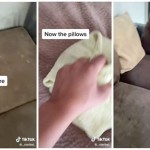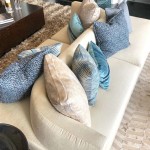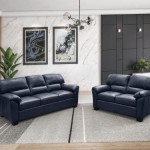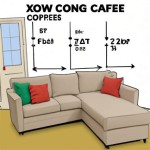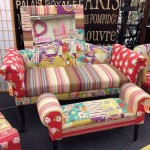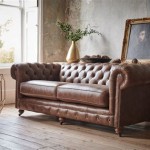Antique Chesterfield Sofas: A Guide to History, Styles, and Identification
The Chesterfield sofa enjoys an iconic status in the world of furniture. Recognizable by its deep buttoning, low seat base, and rolled arms that are the same height as the back, the Chesterfield exudes an air of timeless elegance and classic British design. Understanding the nuances of antique Chesterfield sofas requires exploring their history, construction methods, and key stylistic features.
The origins of the Chesterfield name are shrouded in some mystery. A popular story attributes the design to Lord Philip Stanhope, the fourth Earl of Chesterfield (1694-1773), a known patron of the arts and a man of impeccable taste. Legend suggests he commissioned the first Chesterfield to provide comfortable seating for gentlemen that would not wrinkle their tailored coats. While historical evidence directly linking the Earl to the sofa's creation remains elusive, the name and the style gained popularity in the 19th century, solidifying its association with aristocratic elegance.
The Victorian era (1837-1901) saw the Chesterfield's rise to prominence. Industrial advancements allowed for mass production, making the design accessible to a wider audience, though still a marker of affluence and good taste. The Industrial Revolution also influenced the materials used. While early Chesterfields were likely upholstered in leather, the Victorian era welcomed the use of plush velvets and other rich fabrics, reflecting the opulence of the period.
A crucial element of the Chesterfield is its distinctive deep buttoning, also known as button-tufting. This elaborate technique, applied meticulously by skilled upholsterers, creates the characteristic diamond-shaped indentations across the surface of the sofa. The buttoning isn't merely decorative; it serves a practical purpose, securing the padding and ensuring an even distribution of filling, which traditionally included horsehair, feathers, and other natural materials.
Traditionally, genuine leather has been the preferred upholstery material for Chesterfield sofas. The quality of the leather significantly impacts the sofa's value and longevity. Early Chesterfields typically featured top-grain leather, known for its durability and rich patina that develops with age. Aniline leather, treated with minimal surface coatings, showcases the natural markings and variations in the hide, adding to the character of the piece.
Beyond the leather, the frame construction of an antique Chesterfield is a testament to traditional craftsmanship. Solid hardwood frames, often made of mahogany, oak, or walnut, provide a robust foundation built to last generations. Mortise and tenon joinery, reinforced with dowels and glue, ensures the structural integrity of the frame, a hallmark of high-quality antique furniture.
Identifying a genuine antique Chesterfield requires careful examination. Look for signs of age and wear consistent with the purported age of the piece. Patina on the leather, minor imperfections in the wood, and wear on the castors or feet can all indicate authenticity. Examining the underside of the sofa can reveal the construction techniques and materials used, offering further clues to its age and origin. Reputable antique dealers can provide expert guidance and authentication services.
Different Chesterfield styles emerged throughout history. The classic three-seater sofa remains the most recognizable form, but variations exist, including club sofas, loveseats, and armchairs. Some Chesterfields feature exposed wood legs, while others have a skirted base concealing the frame. The height of the back and the depth of the seat can also vary, reflecting changing tastes and design trends over time.
Caring for an antique Chesterfield sofa requires specific considerations. Regular cleaning and conditioning of the leather are essential for maintaining its suppleness and preventing cracking. Avoid placing the sofa in direct sunlight or near heat sources, which can damage the leather and fade the color. Professional upholstery cleaning and restoration services can address more significant repairs and ensure the long-term preservation of the sofa.
The enduring appeal of the Chesterfield lies in its timeless design and association with quality and elegance. Antique Chesterfields offer a glimpse into the past, embodying the craftsmanship and aesthetic sensibilities of bygone eras. Owning an antique Chesterfield is not just about acquiring a piece of furniture; it's about inheriting a piece of history and adding a touch of classic sophistication to any space.
The value of an antique Chesterfield sofa depends on several factors, including its age, condition, provenance, and the quality of materials used. Rare examples with documented history and exceptional craftsmanship can command significant prices. Consulting with antique furniture appraisers can provide accurate valuations and insights into the market for antique Chesterfields.

Berwick Vintage Chesterfield The Company

Buy Handmade 3 Seater Antique Tan Leather Chesterfield Sofa In

Antique Leather Chesterfield Sofa In Original Vintage Victorian

Fully Red 19thc Victorian Chesterfield Sofa Robinson Of England

Antique Brown Leather 2 Seater Sofa Settee By Chesterfield London

Vintage Chesterfield Sofa Chesterfields Direct

Barrington Vintage Leather Sofa Chesterfield Sofas

Large Antique Brown Leather Chesterfield Sofa 1920s For At Pamono

Oxford Antique Leather Chesterfield Sofa Raised Back Scroll Arms Daia Home

Experience Classic Comfort With The Chesterfield Antique Tan Leather Sofa

